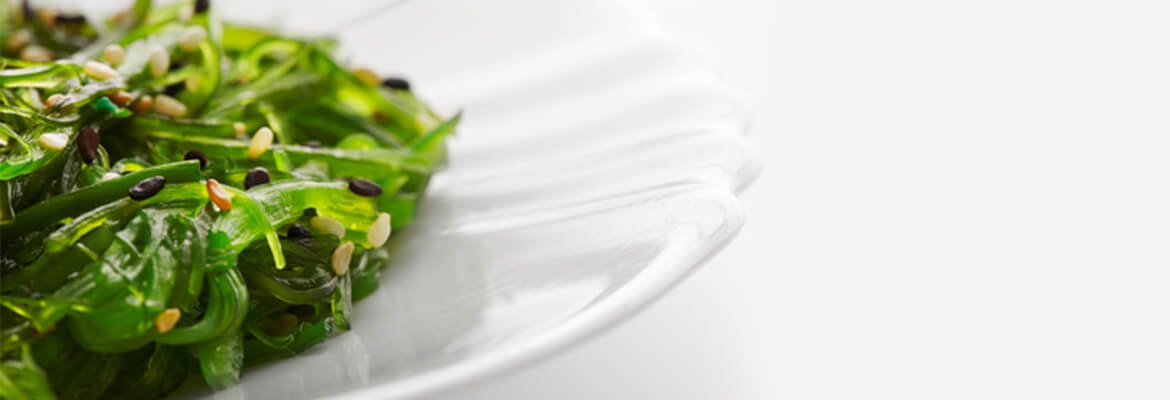The goodness of Sea vegetables
One of the food groups that the Macrobiotic diet is really big on is the inclusion of sea vegetables 2-3 times a week. The consumption of sea vegetables enjoys a long history. The Japanese culture (from which the Macrobiotic diet emanates) has been consuming it for more than 10,000 years. There are many Asia countries: China, Korea, Vietnam and Malaysia, that also include them as a part of their diets. While it has taken me years to introduce a range and its benefits to the Indian market; spirulina is widely available and has been around since Kavita Mukhi a pioneer in the Organic movement sold it under a brand she started. We have all at some point in time tasted nori the sea vegetable that is used as a wrap for sushi.
Since so many of you ask me questions on sea vegetables, so here is a FAQ on them:
Q: What kind of sea vegetables are around?
A: Sea vegetables are found growing in marine salt waters as well as fresh water lakes and seas. There are literally 1000s of seas vegetables classified by colour: brown, red or green. Each is unique and distinct in texture, shape and shape. In the Indian market: spirulina is widely available. In Japanese (because Japan is the largest producer and consumer of sea vegetables) food stores: kombu, hijiki, arame, wakame, kelp, agar-agar, nori (this is used to make sushi), sometimes dulse.
Q. Should vegetables be taken in powder-form or cooked?
A. This really depends on the availability of the format in your country and also the type of sea vegetable being used. Spirulina, is available in powder form. The more stronger sea vegetables (by stronger I mean stronger tasting) like arame and hijiki are used in cooked dishes. Wakame is used generally in soups. Agar agar in kanten like a jelly or to thicken stock/stews. Nori, as mentioned is used to make sushi, but also as a psrinklew. Hijiki and arame, stronger in taste can be made with some vegetables thrown in, as a side dish to a meal.
Q. How much should I take at one time
A. Try doing one type of sea vegetables 2-3 times a week between 1- 10 grams only that’s a real small portion.
Q. How many times a week must you take sea vegetables?
A. You can do spirulina daily (as specified by the brand on the bottle); powdered spirulina about ½ tsp is good. But the stronger sea vegetables 2-3 times a week
Q. Is sea vegetable good for me if I have hyperthyroid or hypothyroid?
A. Yes for hypothyroid; as all sea vegetable contains iodine which in the case of hypothyroid (underactive) you need. In the case of hyperthyroid you may want to ration your in-take and not overdo seaweed.
Q. Why are they so good for me?
A. Including them from time-to-time, will prevent a vitamin/mineral deficiency. They have practically all the trace minerals (and an array of them) you need from your diet, and sometimes do not get all of them in an Indian diet, they are antioxidants (polyphenols, carotenoids and flavonoids and phytonutrient antioxidants. They reduce oxidative stress like no other food will do. For e.g., one tablespoon of a dried sea vegetable will contain 35 mg of iron along with Vitamin C which helps synthesize the iron. Apart from Vitamin C, they have Vitamin B2/B6, Vitamin B1.Vitamin A, manganese, iodine, pantothenic acid, potassium, zinc, niacin, and phosphorus. They have fucoidans (a starch-like polysaccharide) which have anti-inflammatory benefits. Plus fucoidans have a high sulphur content and shown to impact arthritis, also exhibiting anti-viral activity impacting herpes, including having an impact cardiovascular disease. They help lower the risk of cancers, normalize menstrual cycles, help with PMS symptoms, and impact estrogen positively.
On an ‘energetic’ front we humans came from the sea, and eating from it makes us connect with a very core and innate part of ourselves. Sea vegetables bring in focus, determination and helps make strong determinations.
Quick recipe: Soak 2 tablespoon of hijiki in water, then add a little toasted sesame oil to a skillet, add carrots sliced long and some ginger, toss and its ready! Though if it’s your first experience with sea vegetables, you might want to try a lighter less stronger tasting one like wakame in soup. Again it needs to be soaked 1 tablespoon and chopped and added to soup after its ready.

